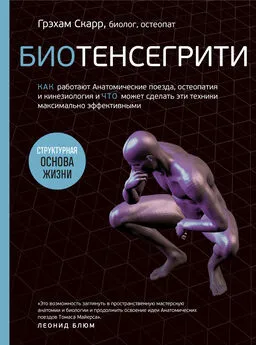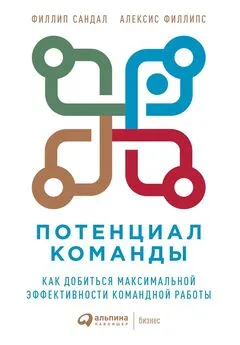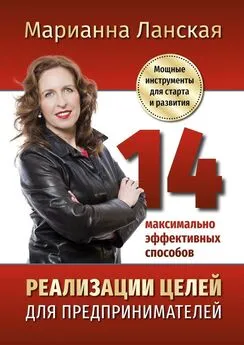Брэд Сталберг - На пике. Как поддерживать максимальную эффективность без выгорания
- Название:На пике. Как поддерживать максимальную эффективность без выгорания
- Автор:
- Жанр:
- Издательство:Манн, Иванов и Фербер
- Год:2018
- Город:Москва
- ISBN:978-5-00117-346-5
- Рейтинг:
- Избранное:Добавить в избранное
-
Отзывы:
-
Ваша оценка:
Брэд Сталберг - На пике. Как поддерживать максимальную эффективность без выгорания краткое содержание
Эта книга рассказывает о том, что это за принципы и как их использовать для достижения личного максимума. Предложенные в ней методики может применить любой человек – от бизнесмена или рядового офисного сотрудника до домохозяйки и творческого фрилансера.
На русском языке публикуется впервые.
На пике. Как поддерживать максимальную эффективность без выгорания - читать онлайн бесплатно ознакомительный отрывок
Интервал:
Закладка:
J.M. Watson and D.L. Strayer, “Supertaskers: Profiles in Extraordinary Multitasking Ability,” Psychonomic Bulletin & Review 17, no. 4 (August 2010): 479–485.
Gisela Telis, “Multitasking Splits the Brain,” Science, 15 апреля 2010, http://www.sciencemag.org/news/2010/04/mullitasking-splits-brain.
Joshua S. Rubinstein, David E. Meyer, and Jeffrey E. Evans, “Executive Control of Cognitive Processes in Task Switching,” Journal of Experimental Psychology: Human Perception and Performance 27, no. 4 (2001): 763–797.
“Injury Prevention & Control: Motor Vehicle Safety,” Centers for Disease Control and Prevention, http://www.cdc.gov/motorvehiclesafety/distracted_driving/ (дата обращения: 07.03.2016).
Patrick Anselme и Mike J.F. Robinson, “What Motivates Gambling Behavior? Insight into Dopamine’s Role,” Frontiers in Behavioral Neuroscience 7 (2013): 182.
Michelle Drouin, Daren H. Kaiser и Daniel A. Miller, “Phantom Vibrations among Undergraduates: Prevalence and Associated Psychological Characteristics,” Computers in Human Behavior 28, no. 4 (июль 2012): 1490–1496.
Justin Worland, “How Your Cell Phone Distracts You Even When You’re Not Using It,” Time, 4 декабря 2014, http://time.com/3616383/cell-phone-distraction/.
Walter Mischel, The Marshmallow Test: Mastering Self-Control (New York: Little, Brown and Company, 2014): 233–273.
K. Anders Ericsson, “The Path to Expert Golf Performance: Insights from the Masters on How to Improve Performance by Deliberate Practice” in Optimising Performance in Golf, под ред. Patrick R. Thomas (Brisbane, Australia: Australian Academic Press, 200), 1–57; K. Anders Ericsson, “Development of Elite Performance and Deliberate Practice: An Update From the Perspective of the Expert Performance Approach” in Expert Performance in Sports: Advances in Research on Sport Expertise, под ред. Janet L. Starkes and К. Anders Ericsson (Champaign, IL: Human Kinetics, 2003), 49–81.
Julio Gifford, “The Secret of the 10% Most Productive People? Breaking!” DeskTime, 20 августа 2014, http://blog.desktime.com/2014/08/20/the-secret-of-the-10-most-productive-people-breaking/.
Awwad J. Dababneh, Naomi Swanson и Richard L. Shell, “Impact of Added Rest Breaks on the Productivity and Well Being of Workers,” Ergonomics 44, no. 2 (2001): 164–174.
P.S. Tiwari and L.P. Gite, “Evaluation of Work-Rest Schedules During Operation of a Rotary Power Tiller,” International Journal of Industrial Ergonomics 36, no. 3 (март 2006): 203–210.
Wolfram Boucsein и Michael Thum, “Design of Work/Rest Schedules for Computer Work Based on Psychophysiological Recovery Measures,” International Journal of Industrial Ergonomics 20, no. 1 (июль 1997): 51–57.
Troci L. Galinsky и др., “A Field Study of Supplementary Rest Breaks for Data-Entry Operators,” Ergonomics 43, no. 5 (2000): 622–638.
A.J. Crum и др., “Mind Over Milkshakes: Mindsets, Not Just Nutrients, Determine Ghrelin Response,” Health Psychology 30, no. 4 (июль 2011): 424–429.
Lisa S. Blackwell, Kali H. Trzesniewski и Carol Sorich Dweck, “Implicit Theories of Intelligence Predict Achievement Across an Adolescent Transition: A Longitudinal Study and an Intervention,” Child Development 78, no. 1 (январь/февраль 2007): 246–263.
Abiola Keller и др., “Does the Perception that Stress Affects Health Matter? The Association with Health and Mortality,” Healthy Psychology 31, no. 5 (сентябрь 2012): 677–684.
Lee J. Moore и др., “The effect of challenge and threat states on performance: An examination or potential mechanisms,” Psychophysiology 49, no. 10 (октябрь 2012): 1417–1425.
Alia K. Crum, Peter Salovey и Shawn Achor, “Rethinking Stress: The Role of Mindsets in Determining the Stress Response,” Journal of Personality and Social Psychology 104, no. 4 (апрель 2013): 716–733.
Graham Jones, Sheldon Hanton и Austin Swain, “Intensity and Interpretation of Anxiety Symptoms in Elite and Non-Elite Sports Performers,” Personality and Individual Differences 17 no. 5 (ноябрь 1994): 657–663.
Brad Stulberg, “Should I Give Whitewater Kayaking a Try?” Outside, 9 ноября 2015, https://www.outsideonline.com/2034356/should-i-give-whitewater-kayaking-try.
Sara W. Lazar и др., “Meditation Experience is Associated with Increased Cortical Thickness,” Neuroreport 16, no. 17 (28 ноября 2005): 693–1897.
Amy F.T. Arnsten, “Stress Signalling Pathways that Impair Prefrontal Cortex Structure and Function,” Nature Reviews Neuroscience 10, no. 6 (июнь 2009): 410–422.
Antoine Lutz и др., “Altered Anterior Insula Activation During Anticipation and Experience of Painful Stimuli in Expert Meditators,” Neuroimage 64 (1 января 2013): 538–546.
Stephen Seiler, Olav Haugen и Erin Kuffel, “Autonomic Recovery after Exercise in Trained Athletes: Intensity and Duration Effects,” Medicine & Science in Sports & Exercise 39, no. 8 (август 2007): 1366–1373.
M. Tudor, L. Tudor и K.L. Tudor, “Hans Berger (1873–1941) — The History of Electroencephalography,” Acta Medica Croatia 59, no. 4 (2005): 307–313.
Susan Whitfield-Gabrieli и Judith M. Ford, “Default Mode Network Activity and Connectivity in Psychopathology,” Annual Review of Clinical Psychology 8 (апрель 2012): 49–76.
Marcus E. Raichfe и др., “A Default Mode of Brain Function,” Proceeding of the National Academy of Sciences of the United States of America 98, no. 2 (16 января 2001): 676–682.
Mason Currey, Daily Rituals: How Artists Work (New York: Knopf, 2013), 120–121.
Frank Stewart, A Natural History of Nature Writing (Island Press, 1994), 4.
Jonathon Smallwood и Jonathan W. Schooler, “The Science of Mind Wandering: Empirically Navigating the Stream of Consciousness,” Annual Review of Psychology 66 (январь 2005): 487–518.
Simone M. Ritter и Ap Dijksterhuis, “Creativity — The Unconscious Foundations of the Incubation Period,” Frontiers in Human Neuroscience 8 (2014): 215.
Shantanu P. Jadhav и др., “Awake Hippocampal Sharp-Wave Ripples Support Spatial Memory,” Science 336, no. 6087 (15 июня 2012): 1454–1458.
Steven Pressfield, The War of Art: Winning the Inner Creative Battle (New York: Rugged Land, LLC, 2002), 125.
Marily Oppezzo и Daniel L. Schwartz, “Give Your Ideas Some Legs: The Positive Effect of Walking on Creative Thinking,” Journal of Experimental Psychology: Learning, Memory and Cognition 40, no. 4 (2014): 1142–1152.
Petti Neighmond, “Walking 2 Minutes an Hour Boosts Health, But It’s No Panacea,” NPR, 1 мая 2015, http://www.npr.org/sections/health-shots/2015/05/01/403523463/two-minutes-of-walking-an-hour-boosts-health-but-its-no-panacea; Srinivasar Beddhu и др., “Light-Intensity Physical Activities and Mortality in the United States General Population and CKD Subpopulation,” Clinical Journal of the American Society of Nephrology 10 (июль 2015): 1–9.
Marc G. Berman, John Jonides и Stephen Kaplan, “The Cognitive Benefits of Interacting with Nature,” Psychological Science 19, no. 12 (2008): 1207–1212.
J.E. Stellar, “Positive Affect and Markers of Inflammation: Discrete Positive Emotions Predict Lower Levels of Inflammatory Cytokines,” Emotion 15, no. 2 (апрель 2015): 129–133.
Lorenzo S. Colzato и др., “Prior Meditation Practice Modulates Performance and Strategy Use in Convergent- and Divergent-Thinking Problems,” Mindfulness (2014): 1–7.
C.J. Cook и B.T. Crewther, “The Social Environment During a Post-Match Video Presentation Affects the Hormonal Responses and Playing Performance in Professional Male Athletes,” Physiology & Behavior 130 (10 мая 2014): 170–175.
Brad Stulberg, “Use Year Mind to Restore Your Body After a Run,” Runner’s World, 28 июня 2016, http://www.runnersworld.com/recovery/useyour-mind-to-restore-your-body-after-a-run.
Jeffrey M. Jones, “In U.S., 40% Get Less than Recommended Amount of Sleep,” Callup, 19 декабря 2013, http://www.gallup.com/poll/166553/less-recommended-amount-sleep.aspx.
Maria Konnikova, “Why Can’t We Fall Asleep?,” The New Yorker, 7 июля 2015, http://www.newyorker.com/science/maria-konnikova/why-cant-we-fall-asleep.
Anne-Marie Chong и др., “Evening Use of Light-Emitting eReaders Negatively Affects Sleep, Circadian Timing, and Next-Morning Alertness,” Proceeding of the National Academy of Sciences of the United States of America 112, no. 4 (27 января 2015): 1232–1237.
Maria Konnikova, “The Work We Do While We Sleep,” The New Yorker, 8 июля 2015, http://www.newyorker.com/science/maria-konnikova/why-we-sleep.
Erin J. Wamsley, PhD и Robert Stickgold, PhD, “Memory, Sleep and Dreaming: Experiencing Consolidation,” Sleep Medicine Clinics 6, no 1 (март 2011): 97–108.
S. Groch и др., “The Role of REM Sleep in the Processing of Emotional Memories: Evidence from Behavior and Event-Related Potentials,” Neurobiology of learning and Memory 99 (январь 2013): 1–9.
Matthew P. Walker & Els van der Helm, “Overnight Therapy? The Role of Sleep in Emotional Brain Processing,” Psychological Bulletin 135, no. 5 (сентябрь 2009): 731–748.
June J. Pilcher и др., “Interactions Between Sleep Habits and Self-Control,” Frontiers in Human Neuroscience (11 мая 2015).
Gary Wittert, “The Relationship Between Sleep Disorders and Testosterone in Men,” Asian Journal of Andrology 16, no. 2 (март — апрель 2014): 262–265.
P.T. Res, “Protein Ingestion Before Sleep Improves Postexercise Overnight Recovery,” Medicine & Science in Sports & Exercise 44, no. 8 (август 2012): 1560–1569.
Cheri D. Mah и др., “The Effects of Sleep Extension on the Athletic Performance of Collegiate Basketball Players,” Sleep 34, no. 7 (1 июля 2011): 943–950.
Kathleen McCann, “Ongoing Study Continues to Show that Extra Sleep Improves Athletic Performance,” American Academy of Sleep Medicine, 4 июня 2008, http://www.aasmnet.org/Articles.aspx?id=954.
Mark R. Rosekind и др., “Alertness Management: Strategic Naps In Operational Settings,” Journal of Sleep Research 4, no. 2 (1995): 62–66.
Michael J. Breus, PhD, “Nap vs. Caffeine vs More Nighttime Sleep?,” Psychology Today, 20 июля 2009, https://www.psychologytoday.com/blog/sleep-newzzz/200907/nap-vs-caffeine-vs-more-nighttime-sleep.
Clifford B. Soper, Thomas C. Chou и Thomas E. Scammell, “The Sleep Switch: Hypothalamic Control of Sleep and Wakefulness,” Trends in Neurosciences 24, no. 12 (1 декабря 2001): 726–731.
“Sleep Hygiene Tips,” Centers for Disease Control and Prevention, 10 декабря 2014, http://www.cdc.gov/sleep/about_sleep/sleep_hygiene.html.
“What is Sleep Hygiene?” National Sleep Foundation, http://sleepfoundation.org/ask-the-expert/sleep-hygiene (дата обращения: 17.11.2015).
“Sleep Hygiene Tips,” American Sleep Association, https://www.sleepassociation.org/patients-general-public/insomnia/sleep-hygiene-tips/ (дата обращения: 17.11.2015).
Scot Cacciola, “The Secret to Running: Not Running,” The Wall Street Journal, 20 сентября 2012, http://www.wsi.com/articles/SB10000872396390444032404578006274010745406.
Читать дальшеИнтервал:
Закладка:
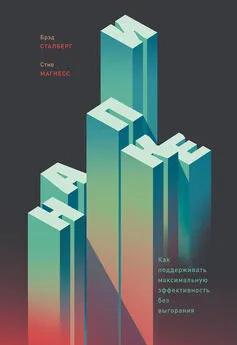
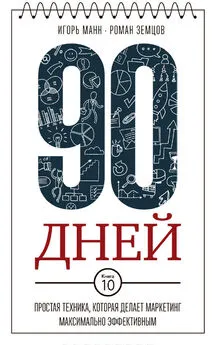

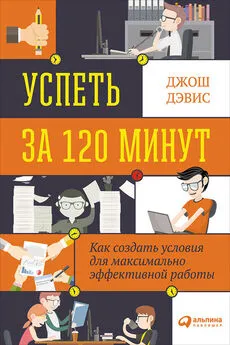
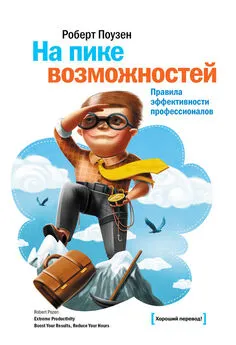
![Брэд Сталберг - Гори, но не сгорай. Как пойти ва-банк, добиться успеха и наслаждаться жизнью без баланса [litres]](/books/1147482/bred-stalberg-gori-no-ne-sgoraj-kak-pojti-va.webp)
